|

 |
|
|
Kyrgyz Yurt at Earth Centre
It is hoped that the Kyrgyz yurt can stay in Doncaster. Since
the announced closing of the Earth Centre, it is a concern that the authentic
and beautiful yurt will be lost to the citizens of South Yorkshire.
Earth Centre is now closed. Earth Centre closed
in October 2004. Earth Centre is now in administration and is no longer open to
the public.
|
|
 |
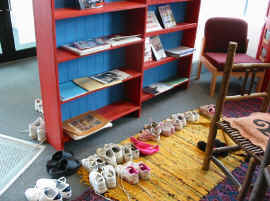 |
|
This is the outside of the felt Yurt. It is made from willow wood and felt.
It is a SUSTAINABLE house. The doorway always faces south. The sun can shine through the
doorway. There is a little hole in the roof to let the smoke through. |
Rosie asks us to take our shoes off before entering the yurt, and we
leave them in a nice, neat line. Kyrgyzstan is in central Asia. It is near to Russia and
China and Mongolia and Afghanistan and Pakistan.
|
|
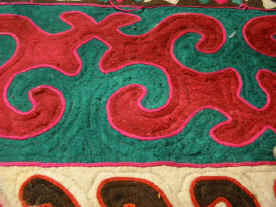 |
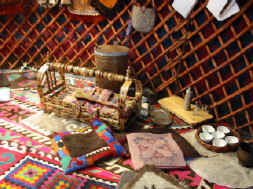 |
|
This beautiful pattern is cut from felt |
The baby's cot and some cooking things |
|
 |
 |
|
Sitting on the lovely wool carpets in the Yurt. The wool is made into
felt with some gorgeous colours. |
The Tunduk - It is the crown which supports the roof and lets daylight
into the yurt. Big Pieces of felt go on the roof to keep out the rain and snow. Its is
like a woolly carpet on the roof! The smoke goes out through a hole in the roof. |
|
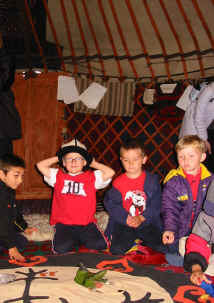 |
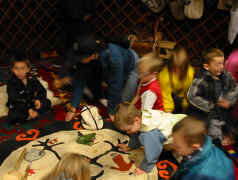 |
|
Here we are trying a felt hat on for size.
A felt hat keeps your head nice and warm. |
Here we are playing the table cloth game. We have to put all the objects
in the correct place. |
|
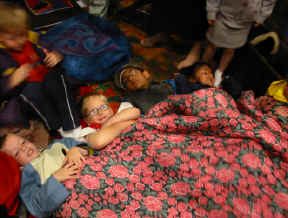 |
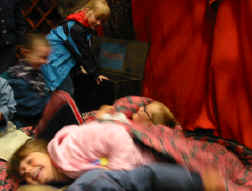 |
|
snuggling under the covers - there are no beds!
|
|
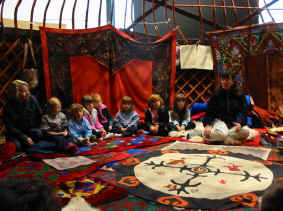 |
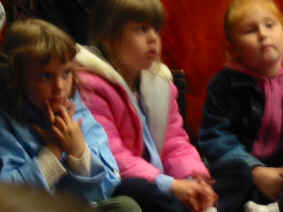 |
|
Rosi our tour guide talks about the Yurt. |
We learn about the sheep and the wool that is made into felt |
|
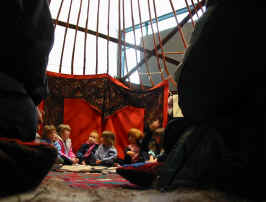 |
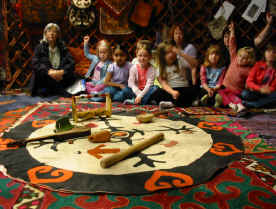 |
|
It is lovely in the yurt. A lovely home for the family to live in.
|
We have been putting the objects on the table cloth.
|
|
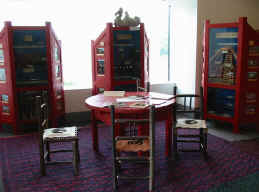 |
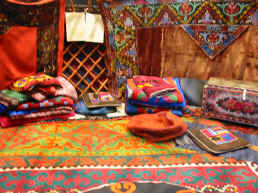 |
|
There is a table outside the yurt where you can sit and look at books
and draw pictures. There are some display cases with real objects in from
Kyrgyzstan.
|
Some of the cushions and carpets and wall hangings
|
|
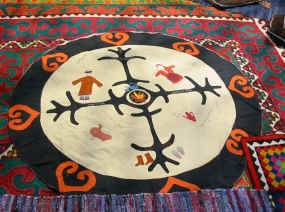 |
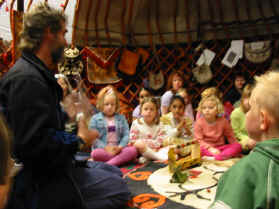 |
|
This is the tablecloth - we must not walk on it.
There is a men's side. The men are called Er Jaks. On the men's side are the music things
and the saddle.
There is a women's side. The women are called Epchi Jaks. On the women's side is the cradle
and the cooking things.
The boots go at the doorway.
The place of honour is on the north side. John, Rosi, Debbie & Richard sat in the
place of honour, because they were our tour guides. |
John told us a story about Manas who was a famous and powerful leader of
the Kyrgyzstan people. They have many stories about his bravery and strength. Some
of the stories take all day to tell, but John's story was not as long as all day! |
|
Common patterns that are found in Kyrgyz Art. We saw lots of these
patterns on the beautiful rugs and carpets and bags.
|
|
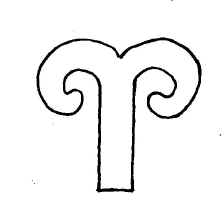 |
 |
|
Rams horn motif
(kochkor muyuz)
This is the most common& characteristic motif:
2 horns curving outward from a central point. It is found throughout Central Asia. |
Forked post motif
(acha bakan)
This is the post used to put the roof felts on the yurt and to close & open the smoke
flap. |
|
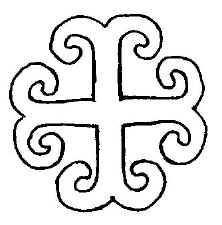 |
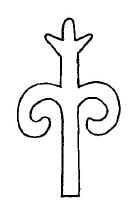 |
|
Four horns motif
(tort muyuz)
Four sets of rams horns form a cross. |
Raven's claw motif
(karga turmak)
This motif may have been used as protection.
|
|
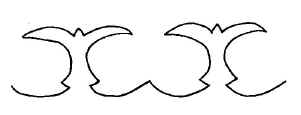 |
 |
|
Birds wing motif
(kush kanat)
This design is often used in border designs. |
Four horns motif
(tort muyuz)
Four sets of rams horns form a cross |
Yurts
A yurt is a circular nomadic dwelling tent used in Central Asia. In this
instance the Earth Centre yurt is a festival yurt from Kyrgyzstan, a
country which borders with China, Kazakhstan, Uzbekistan, and
Tajikistan. Visitors will be able to experience a living yurt complete
with authentic cultural contents and decorations. Four larger yurts made
in England out of canvas and willow will provide a space for activity
and related workshops. This project is the first in an intended series
which will explore with the visitor different ways of living around the
world and celebrate the diversity of human culture.
The yurt provides a particularly good example of human adaptation and
diversity because its development has been closely related to its local
ecology. The landscape of Kyrgyzstan is relatively young, so the
mountains are steep and high and the soil is thin. Consequently the land
is vulnerable to over-farming and the Kyrgyz people have developed a
nomadic way of life, herding sheep, camels and wild horses. Indeed a
family yurt can be packed up and carried on the back of two camels.
Sadly these traditions now represent a dying culture due to arable
systems enforced upon the Kyrgyz people.
Yurts also provide an amazingly effective educational space, partly
because the Kyrgyz tradition is an oral tradition, cultural knowledge is
not written down but is passed from one generation to the next by word
of mouth. Many design features of the yurt reflect this aspect of Kyrgyz
tradition: the dome-like structure has great acoustics, people can sit
on the floor in a circle, so everyone can always see one another, there
are no windows and therefore no external distractions and the atmosphere
is soft, warm and womb-like.
The oral tradition is characterised by the Manas poem, an epic
thirty-day piece which conveys all the spiritual, practical, historical
and cultural information about the Kyrgyz culture.
The Earth Centre Yurts
The special nature of yurts and the traditional lifestyle of the people
who live in them offer us a lesson in sustainable living.
For over a thousand years tents like these have been homes for the
nomads of Central Asia.
The small felt tent is a traditional Kyrgyz yurt. The canvas yurt was
made in England and has four sections.
The Kyrgyz people build their yurts with high sides and steep roofs to
withstand the rain and snow in the high mountain region where they live.
In different parts of Central Asia yurts are built in other shapes to
give protection against the weather of that area.
The felt covers of the Kyrgyz yurt are laid on a trellis frame usually
made of willow. The yurt is light and easy to put up, to pull down and
to carry from place to place. Notice the distinctive smell of the felt
when you enter the Kyrgyz yurt.
The exhibitions in the canvas yurt and in the traditional Kyrgyz
interior of the felt yurt give an insight into the nomadic way of life.
|
top of page
|
|
|
[ Home ] [ Up one level ] [ Welcome Hall ] [ Galleries ] [ Yurt ] [ Felt Making ] [ Amazon Adventure ] [ Hope's Express ] [ Grounds ] [ Fishing Lake ] [ Nature Works ] [ Sensory Trail ] [ Adventure Playground ] [ Water Works ] [ Water Game ] [ BBC Gardens ] [ Allotment Gardens ] [ Resources ] [ Activities ] [ Aerial Views ] |
|
|